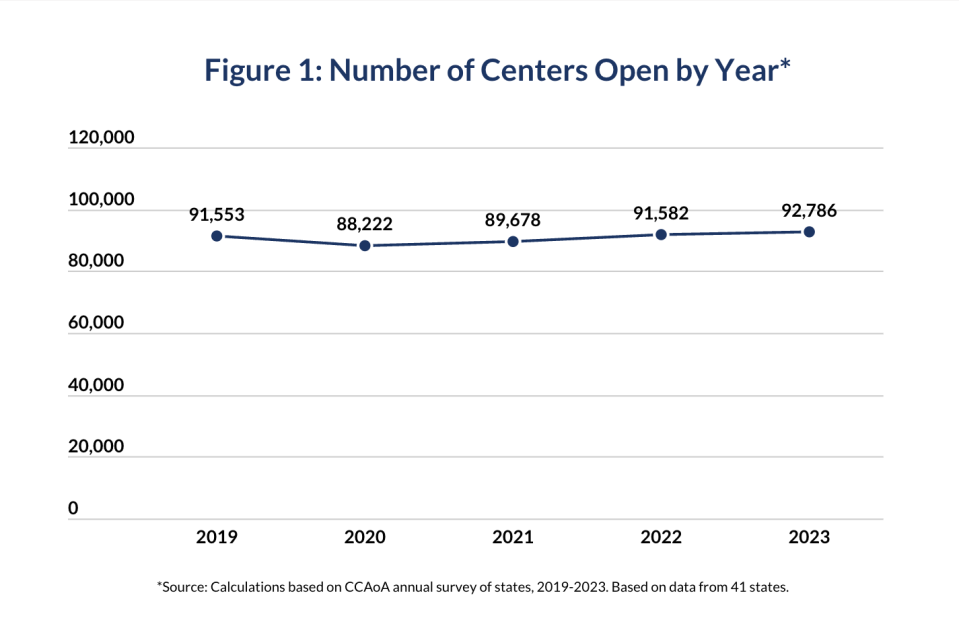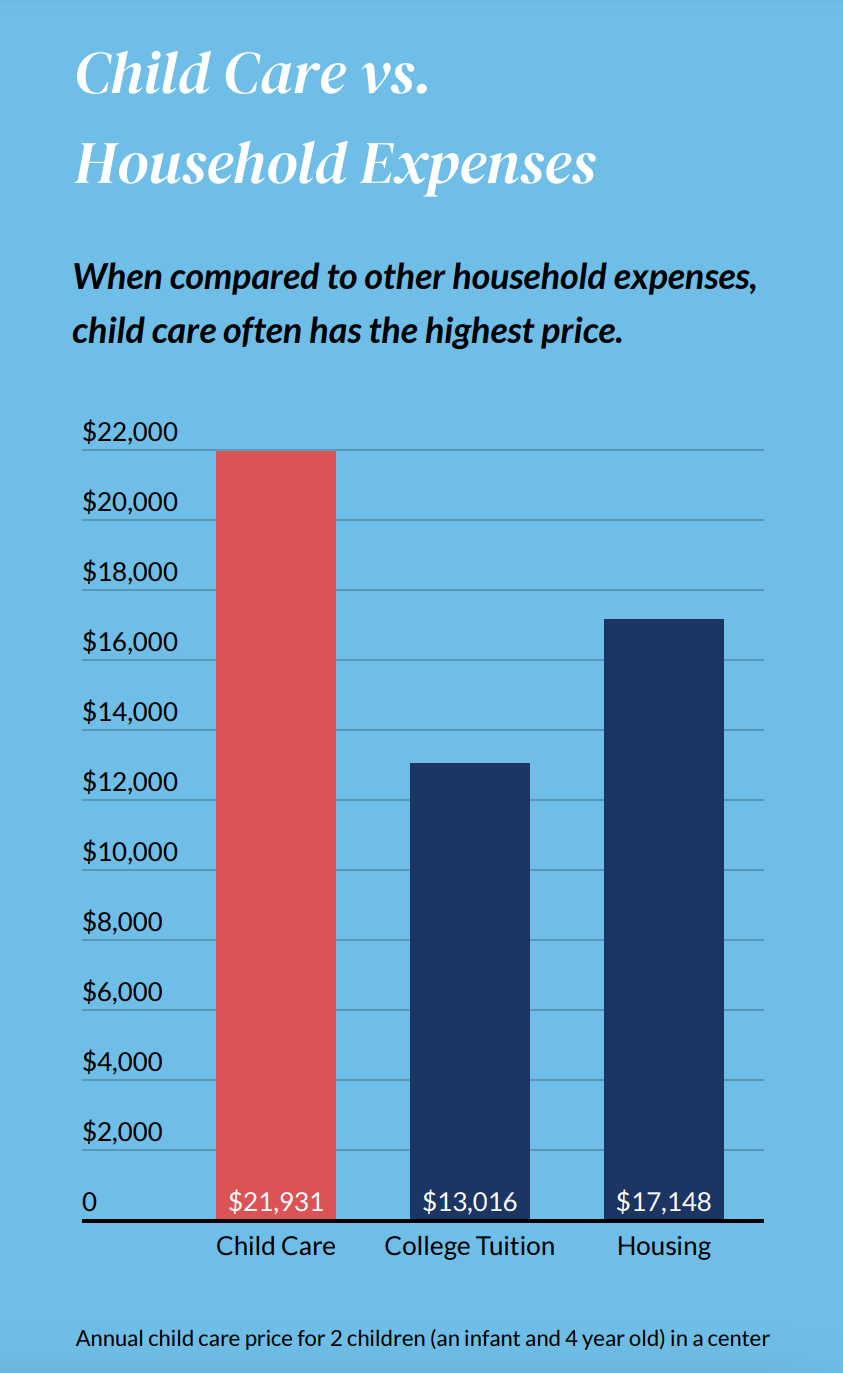Child care in Ohio costs more than housing and college. Here's why, what you need to know
Finding and affording child care is a large concern for many parents, and neither one is all that easy, according to a new study.
The number of child care centers had a very small increase nationally, by a little more than 1%, according to Child Care Aware of America.
In the 41 states examined, the number of licensed centers totaled 91,553 in 2019 and increased to 92,786 in 2023. Between 2022 and 2023, the number of licensed child care centers increased by 1.3%.
With this comes child care expenses, which can outpace the cost of college in some states.
But what does this mean for parents, children, child care workers, and the state of child care? Here’s what to know.
Number of child care centers in 2023 similar to pre-pandemic total in 2019
There was a small increase in the number of child care centers and a slight decrease in the number of family child care (FFC) homes — where providers care for a small group of children in their private homes — at a national level from 2022 to 2023, according to CCAOA’s analysis.
The number of open child care centers went down in 2020 as the pandemic began, but increased in 2023, having a little more than the number before the pandemic in 2019.
However, licensed FFC homes decreased, with a 12% decline since 2019.
Licensed child care spaces remain a little lower than they did in 2020, having 90 fewer in 2023. The same goes for licensed family child care homes, having 491 fewer in 2023.
Ohio's totals slid from where they were in 2020 and 2021, at the height of the pandemic. The Buckeye State tallied 6,088 licensed child care centers in 2023, more than in 2022 but still less than the number in 2020, per CCAOA. Ohio counted 2,296 FCC homes in 2023, nearly 500 fewer than 2020 and almost 250 less than in 2022.

Child care costs in Ohio
Child care is important to working parents, but it’s also beneficial to children as it makes more room for the development of social, motor, communication, and emotional skills. But should it be expensive?
The price of child care and family child care remains too high for many families. According to the CCAOA, Ohioans with an infant and toddler in child care facilities spend close to $22,000 yearly, on average, which is far more than the cost of housing or college tuition.
The annual price of child care
Infant in center-based child care: $12,351 per year
Toddler in center-based child care: $11,125 per year
Infant in family child care: $9,278 per year
Toddler in family child care: $8,862 per year
Nearly $1,000 a month: Average cost for child care in Ohio is more than $11K for an infant. How can state help?
Affordability of child care for families in Ohio
The median income for a married couple in Ohio is $117,901, which means center-based child care for an infant would use 10.5% of family income.
The median income for a single-parent household is $31,271, which means center-based child care for an infant would use 39.5% of family income, or more than a third of their income.
Based on CCAOA’s Ohio analysis, child care costs more than tuition and housing when compared to other household expenses.

The U.S. Department of Health and Human Services recommends that child care should not cost families more than 7% of their annual income.
Why does child care cost cost so much?
According to CNBC, rising fees at child care centers are contributing to the growing costs of child care, as well as inflation and changes in parents’ work status.
Many daycare centers closed during the pandemic, which left a few open with high demand for limited slots. This brought waitlists, and even non-refundable fees to enter the waitlist. And when a parent can get off the waitlist, they have to pay a “new child” fee.
Do child care centers receive government funding?
In 2021, the Biden Administration announced the American Rescue Plan Funding to help child care centers recover from the pandemic. That included $24 billion allocated to aid child care programs in covering basic operational costs, program materials, wages, and benefits.
However, the funding expired in September 2023, which was known as the “child care cliff." According to care.com, 79% of parents who responded expect to be impacted by fallout from the child care cliff in 2024. Fifty-four percent of those are steeling themselves to spend $600 or more per month on child care, totaling more than $7,000 in additional care costs for 2024.
How to plan ahead and save on child care
Here are ways you can plan for your family’s future, CNBC reports after talking to financial advisors:
Start building emergency savings early: It’s important to have cash reserves when starting a family, as child care is one of many household expenses. Set up an emergency fund before you start having kids.
Try to eliminate high-rate debt: Eliminating any monthly debt payments before you have a baby can help reduce expenses and free up money in your budget for daycare costs.
Research company child care benefits: Your job may offer you child care benefits. Many employers offer child care FSA or dependent care FSA, which typically allows you to set aside up to $5,000 per year using pretax dollars from your paycheck.
This article originally appeared on Cincinnati Enquirer: Why is child care so expensive in Ohio? A 2023 study reveals reasons

